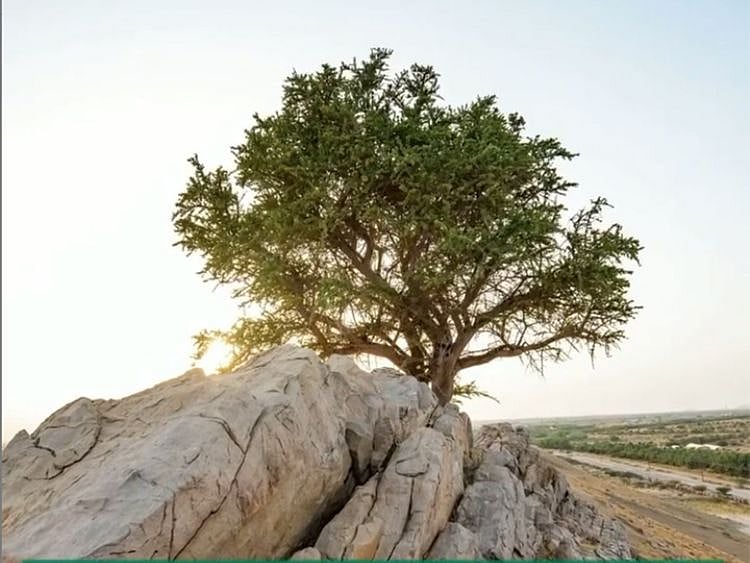Abu Dhabi plants seedlings of rare Al Sarh tree that can grow up to more than 100 years
Tree was first officially recorded as growing in the emirate in July 2020

Also In This Package
Abu Dhabi: Abu Dhabi has embarked on a new project to ensure that a rare tree species that can grow to be 100 years old can be successfully propagated in the emirate.
The Al Sarh tree, a member of the caper family, was first recorded officially as a species in the emirate in July 2020. Now, 25 tree seedlings have been replanted in Jabel Hafeet National Park in Al Ain, after several initial attempts at the Al Dhafra Native Plant Nursery, and measures have been taken to ensure the growth and independent sustainability of the seedlings.
The project has been undertaken following the directives of the Sheikh Hamdan Bin Zayed Al Nahyan, Ruler’s Representative in Al Dhafra region, and the emirate’ environment sector regulator, the Environment Agency Abu Dhabi.
Special measures
The seedlings have been planted in small incubators with shading net, which will protect the saplings in the first stage as well as reduce evaporation and environmental stress. The young plants will be watered in the first stage, with plans to reduce irrigation gradually so that the plants can grow independently.
The EAD will continue to work to ensure that the species thrives in its natural habitat.
Traditional uses
Al Sarh is scientifically known as Maerua crassifolia, and Al Maroud in standard Arabic. The species was formally only known to grow in the UAE in Ras Al Khaimah, before the 100-year-old tree specimen was officially found in a rocky formation in Al Ain’s Al Malakat area, close to the UAE border with Oman. Inhabitants of the area said they remembered using the tree’ delicate branches to apply eyeliner.
‘The Comprehensive Guide to the Wild Flowers of the United Arab Emirates’ specifies other traditional uses, including boiling the leaves of Al Sarh to produce a drink that can treat colic. Its leaves were also powdered to make a poultice for the treatment of pain arising from bone fractures. The 2003 guide was published by the Environmental Research and Wildlife Development Agency, which preceded the EAD.
Where it grows
Al Sarh is an evergreen tree with small oval leaves, a leathery texture and dense branches. The branches give the tree a spherical green crown that provides a shade footprint. When fully grown, the tree can be as tall as nine metres. Its single flowers bloom in January and February, and turn into small, prickly fruits that ripen in March and April.
According to the EAD, the species grows widely across Africa, although numbers are declining in Egypt, where it was once considered sacred by the ancient Egyptians. It is also found in the Arabian peninsula, particularly in Yemen, and in Jordan and Palestine. The UAE and Oman are at the extreme eastern end of its range.
Sign up for the Daily Briefing
Get the latest news and updates straight to your inbox
Network Links
GN StoreDownload our app
© Al Nisr Publishing LLC 2025. All rights reserved.